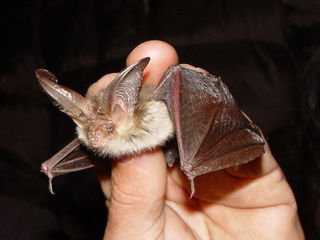
Brown big-eared bat
Order : Chiroptera
Family : Vespertilionidae
Subfamily : Vespertilioninae
Species : Plecotus auritus
The Brown big-eared bat, brown long-eared bat is listed as Least Concern (LR/lc), lowest risk. Does not qualify for a more at risk category. Widespread and abundant taxa are included in this category, on the IUCN Red List of Threatened Species
Namings for the brown bigeared bat
A young / baby of a brown bigeared bat is called a 'pup'. A brown bigeared bat group is called a 'colony or cloud'.Countries
Austria, Belgium, Bulgaria, China, Czech Republic, Denmark, Finland, France, Georgia, Germany, Iran, Ireland, Italy, Japan, Korea, North, Korea, South, Latvia, Luxembourg, Mongolia, Nepal, Netherlands, Norway, Poland, Portugal, Romania, Russia, Slovakia, Slovenia, Spain, Sweden, Switzerland, Turkey, Ukraine and United KingdomSome facts about the
Brown big-eared bat
Adult weight : 0.008 kg (0.0176 lbs)
Maximum longevity : 30 years
Female maturity :365 days
Male maturity : 365 days
Gestation : 65 days
Weaning : 42 days
Litter size : 1
Interval between litters : 365 days
Body mass : 0.01 kg (0.022 lbs)
Temperature : 33.85 °C (92.93 °F)
Facts about the brown big-eared bat
Brown Long-Eared Bat or Plecotus auritus is listed on the IUCN Red list (1996) as Lower Risk/Least Concern .
Brown Big-Eared Bat or Plecotus auritus is listed on the IUCN Red list (1996) as Lower Risk/Least Concern .
The neural excitatory threshold of Plecotus auritus is lowest, or most sensitive, at two frequencies: 10 kHz and 50 kHz--these two frequencies correspond to gleaning and echolocation activity, respectively.
Abstract: The brown long-eared bat, Plecotus auritus, is unusual among temperate zone bats in that summer maternity colonies are composed of adult males and females, with both sexes displaying natal philopatry and long-term association with (Full text)
In the first of these, the Plecoteae, of which the long-eared bat (Plecotus auritus) is the type, the crown of the head is but slightly raised above the face-line, the upper incisors are close to the canines, and the nostrils are margined behind by grooves ~n the upper surface of the muzzle, or by rudimentary nose-leaves; the ears being generally very large and united.
ABSTRACT The brown long-eared bat, Plecotus auritus, is unusual among temperate zone bats in that summer maternity colonies are comprised of adult males and females, with both sexes displaying natal philopatry and long-term association with a colony. (Full text)
The brown long-eared bat Plecotus auritus is known as a ‘whispering bat’.
More animals beginning with B
